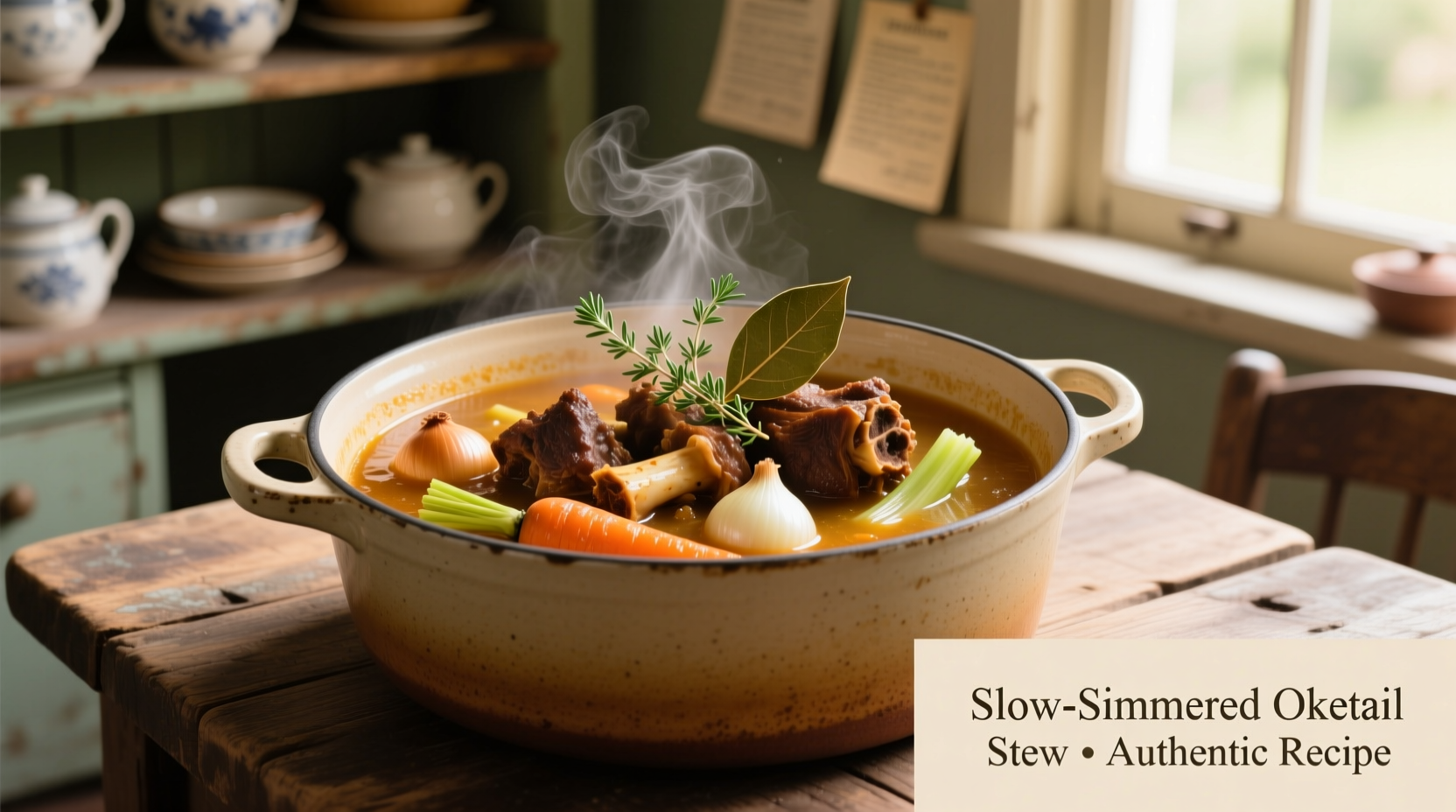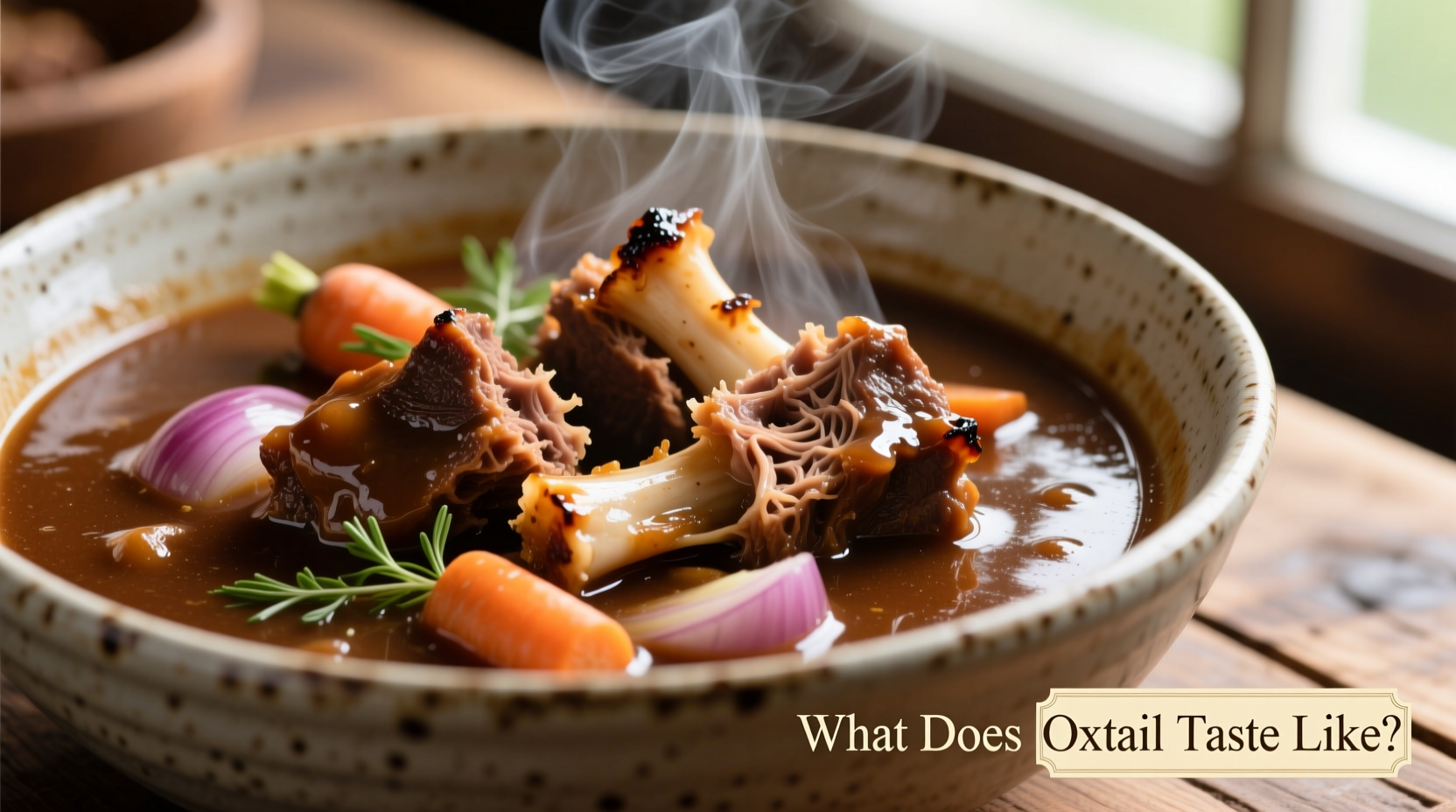Curious about what oxtail actually tastes like? You're not alone. This once-overlooked cut has gained popularity in gourmet kitchens and home cooking alike, but many remain unsure what to expect from this distinctive ingredient. Understanding oxtail's unique flavor profile can transform your cooking approach and help you decide if it's right for your next culinary adventure.
The Complete Oxtail Flavor Experience
When properly prepared, oxtail delivers a multi-dimensional taste experience that sets it apart from other beef cuts. The flavor profile develops through several key elements:
- Rich beef essence - More concentrated than standard steak cuts due to higher collagen and marrow content
- Umami depth - Natural glutamates develop during slow cooking, creating that satisfying savory quality
- Silky texture - Connective tissues melt into gelatin, providing mouth-coating richness
- Subtle sweetness - From the bone marrow that seeps into surrounding meat during cooking
- Earthy undertones - Distinctive notes that develop when braised with aromatic vegetables
Unlike leaner cuts, oxtail's taste evolves dramatically with cooking time. When undercooked, it can be tough and chewy with minimal flavor release. But after 3-4 hours of proper braising, the collagen breaks down completely, transforming both texture and taste into something extraordinary.
Oxtail Taste Compared to Other Cuts
Understanding how oxtail compares to familiar cuts helps set proper expectations. This fact comparison reveals why oxtail stands in a category of its own:
| Beef Cut | Flavor Intensity | Texture Profile | Gelatin Content | Cooking Time Required |
|---|---|---|---|---|
| Oxtail | Very High | Gelatinous, tender meat with silky mouthfeel | Extremely High | 3-4 hours braising |
| Short Ribs | High | Firm yet tender, less gelatinous | Moderate | 2-3 hours braising |
| Chuck Roast | Moderate | Fibrous when pulled | Low-Moderate | 2-3 hours braising |
| Brisket | Moderate-High | Chewy when sliced against grain | Moderate | 8-12 hours smoking |
According to the USDA Meat and Poultry Library, oxtail contains approximately 30% more collagen than standard chuck roast, which explains its superior gelatin development and richer mouthfeel when properly cooked. This higher collagen content directly contributes to oxtail's distinctive flavor concentration.
How Cooking Method Transforms Oxtail Flavor
The cooking technique dramatically impacts what oxtail tastes like. Here's how different methods affect the final flavor profile:
Oxtail Flavor Development Timeline During Braising
- 0-30 minutes: Initial searing develops Maillard reaction, creating complex roasted notes
- 1 hour: Surface meat begins to tenderize, flavors start melding with aromatics
- 2 hours: Connective tissues begin breaking down, gelatin starts releasing into liquid
- 3 hours: Meat separates easily from bone, marrow fully integrates with surrounding meat
- 4 hours: Peak flavor development - maximum gelatin extraction, deepest umami notes
- 5+ hours: Risk of overcooking - flavors may become muted, texture overly soft
Professional chefs like those at the James Beard Foundation-recognized restaurants consistently emphasize that patience is essential. "Oxtail rewards slow cooking like few other cuts," explains culinary experts. "The magic happens between the 3-4 hour mark when collagen fully converts to gelatin without losing structural integrity."

Global Flavor Variations
What oxtail tastes like varies significantly across culinary traditions. Different cultures have developed unique preparation methods that highlight different aspects of its flavor profile:
- Korean oxtail soup (Kkori Gomtang) - Clear broth emphasizing pure beef essence with subtle garlic notes
- Jamaican oxtail stew - Rich, dark gravy with thyme, allspice, and Scotch bonnet peppers
- Chinese oxtail soup - Often includes star anise and ginger for aromatic complexity
- Italian coda alla vaccinara - Tomato-based with celery and carrots for balanced acidity
The American Meat Science Association notes that regional preparation methods significantly impact the final flavor compounds. Acidic ingredients like tomatoes or vinegar help break down collagen faster but can slightly mute the pure beef flavor, while clear broths preserve the meat's natural essence.
Practical Tips for First-Time Oxtail Eaters
If you're trying oxtail for the first time, these practical insights will help you appreciate its unique qualities:
- Expect richness - Oxtail dishes are typically served in smaller portions due to intense flavor
- Texture surprise - The gelatinous quality might feel unfamiliar if you're used to leaner meats
- Flavor pairing - Works exceptionally well with root vegetables, red wine, and earthy herbs
- Serving temperature - Best enjoyed hot, as gelatin solidifies when cooled
- Leftover potential - Flavors deepen overnight, making it excellent for next-day meals
Many first-time eaters report that oxtail exceeds expectations once they understand what to anticipate. The initial perception of "gamey" flavor often disappears with proper preparation - what some mistake for gaminess is actually the deep umami quality that makes oxtail so prized by chefs.
When Oxtail Might Taste Different Than Expected
Certain conditions can significantly alter what oxtail tastes like, creating potential surprises for inexperienced cooks:
- Source quality matters - Grass-fed vs. grain-finished cattle produce noticeably different flavor profiles
- Cut freshness is critical - Older oxtail can develop off-flavors even when properly cooked
- Cooking vessel impact - Cast iron can impart metallic notes if not properly seasoned
- Acid balance - Too much tomato or vinegar can overpower the delicate beef essence
According to culinary research published by the Culinary Institute of America, the age of the animal significantly impacts flavor. Older cattle produce oxtail with more complex, robust flavors but require longer cooking times, while younger cattle yield milder-tasting oxtail that cooks faster but with less depth.
Why Chefs Love Oxtail
Professional kitchens prize oxtail for reasons beyond just flavor. Its unique properties offer several culinary advantages:
- Natural thickener - The gelatin released creates luxurious, self-thickened sauces without additives
- Flavor amplifier - Enhances entire dishes, making modest ingredients taste luxurious
- Visual appeal - The dramatic presentation of meat falling off the bone impresses diners
- Economical luxury - Delivers premium taste at a fraction of the cost of premium cuts
Understanding what oxtail tastes like helps explain its resurgence in contemporary cuisine. It's not just about nostalgia for traditional cooking methods, but appreciation for a cut that delivers unmatched depth and complexity when treated with proper technique.











 浙公网安备
33010002000092号
浙公网安备
33010002000092号 浙B2-20120091-4
浙B2-20120091-4